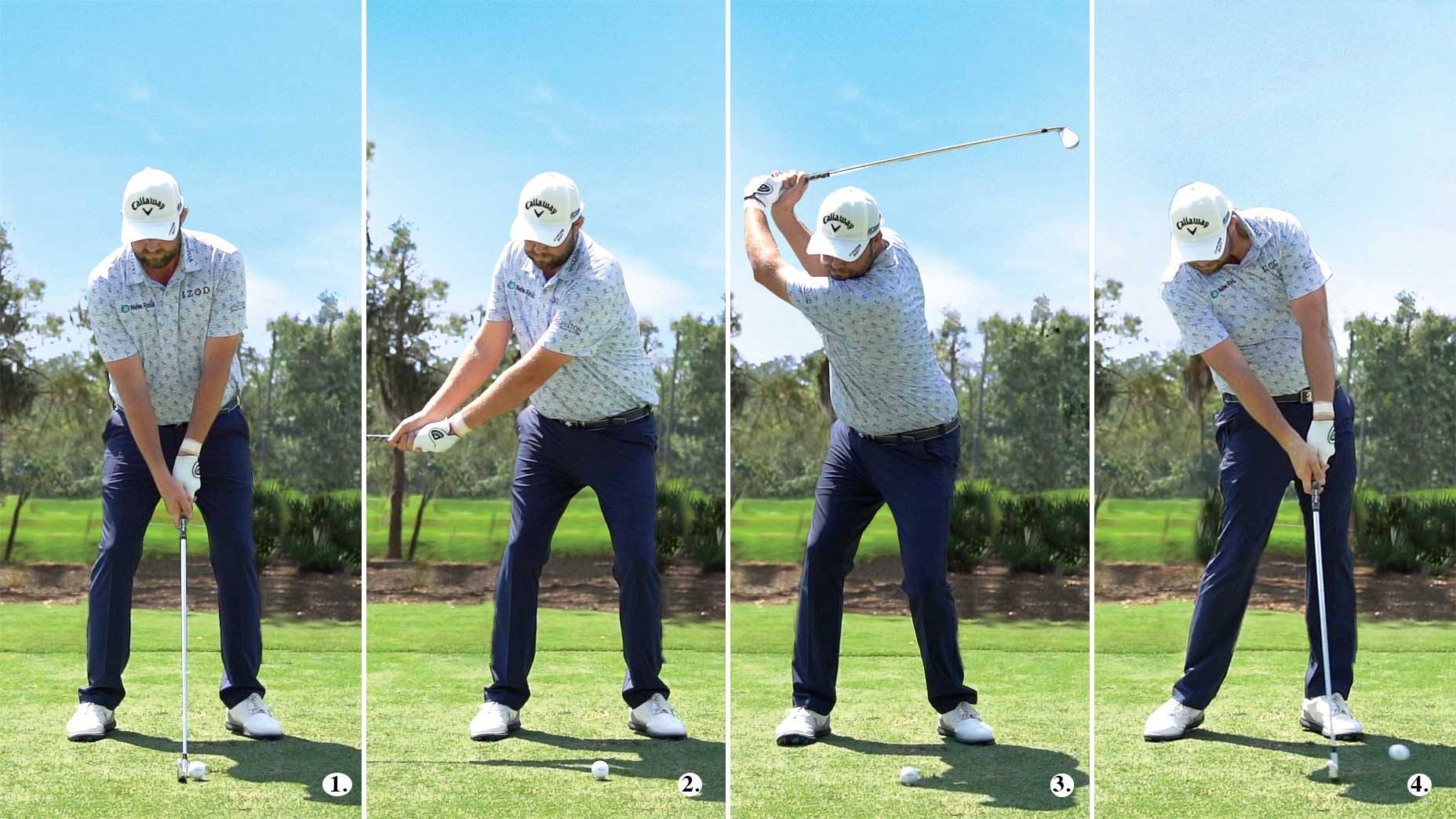Master Your Swing: Learn The Fundamentals Of Golf Swing Mechanics To Improve Your Game

Learning the Mechanics of the Golf Swing
Perfecting your Best golf swing is something that takes years to master, and even the pros are constantly tweaking parts of their game to get an edge over the competition. The key to a good swing is understanding golf swing mechanics. If you understand this, you will set yourself up for success every time you step up to the tee. Before we look at ways to improve your swing, let’s take a look at the mechanics of a golf swing and break down the shot into seven sections.
Address
This is where it all starts; get a good setup, and the rest of the shot will follow. Set up in the wrong position, and you’re destined for failure. Try not to bend your knees too much; just a slight bend will do. Most of the movement over the ball will come from your waist area. Keep your back straight and your waist bent, aiming your belt buckle at the ball instead of straight in front of you. Keep your grip firm enough to keep control of your club but loose enough for it to move fluidly through the stages of the shot.
Takeaway
This is probably the most crucial mechanic of the golf swing to get right. The takeaway, the initial phase of the actual swing itself, is the part between the club leaving its resting position and reaching the height of your waist. To get a good start with your takeaways, try to use your shoulders before your wrists to swing the club back, as this will keep it on the target line and your wrists will follow. If you rotate your club so that the toe of the club is facing upwards to the sky, you will ensure the club returns to a square position with the ball. If this part goes smoothly, you shouldn’t have to adjust anything at the top of your backswing, and it should be plain sailing from thereon.
Backswing
The backswing is the mechanic that we use between the takeaway and the top of your swing. One key thing to learn about your backswing is that it doesn’t need to be fast if you can’t follow it up with an even faster downswing. Just make sure you get your position right and stay balanced. Keep your weight at the top of your legs, not the bottom, and try not to slide away from the target, as this can affect your power.
Transition
While it may not be one of the most basic golf swing mechanics on the list, the transition is crucial if you want a smooth-looking swing that feels right. The transition is the part when the club goes from moving backward to moving forward. Some of the best golf pro’s in the world make the transition look effortless as if the whole swing back and forth is just one clean constant movement, but if you break it down, there is always a short period between the two and it’s key to hold your nerve here and refrain from any movements that might put you off course.
Downswing
This is one of the most important mechanics of the golf swing. Getting a good downswing determines the power of your shot. You need to follow it up with a good contact to get the most out of a fast swing but getting your downswing nailed is a key part of golf swing mechanics and will greatly improve your game. First of all, when the club is at the top of the downswing, lead with your lower body and then follow with your upper body. Going in with your stronger upper body first will cause issues with your line and create difficulty in getting a good impact.
Impact
The impact is where all of your work so far comes together. As you reach the end of your downswing, your club face needs to be square on with the ball to ensure full contact and to avoid the dreaded slice. As your weight transfers from your upper arms to your wrists, you should aim to get your hands past the ball before impact. This will make sure that the club is in full swing and meeting the ball at the correct point for a clean hit and a successful follow-through.
Follow-through
You might think the follow-through is a pointless skill to learn. The best Golf ball has already left the best golf club, so technically, you could do anything after that, and it wouldn’t affect the shot, right? Well, technically, that’s true, but having a good follow-up can tell you a lot about your swing. Try to hold your final position until the ball has landed and take note of where your belt buckle is facing. If it’s facing towards the target, you’re on the right track, but if you’ve naturally rotated too far past the center, it’s likely there is something wrong with your downswing, which could be linked to an issue with your transition and so on.
Now that you understand basic golf swing mechanics let’s go over some key tips to remember to improve your swing for the next time you hit the course.
Good Setup, Good Shot
Firstly, remember that all good shots start with a good address. When setting up your golf club, avoid being in a straight line with the ball. Instead, you want your hands to be in front of the ball, with the club in a straight line resting just behind it. This will keep you in the correct position to hit the ball the way it’s supposed to be hit.
Improve Your Grip
It’s common for amateur golfers to grip the club too tightly. To pull off a liquid movement in your transition, you will need a relatively loose grip; the same goes for your impact. If you grip the club too tightly, you can’t expect to get your hands past the ball before contact, which is crucial for a perfect shot.
Impact is Key
Maybe it sounds obvious, but a good clean impact is what carries the best golf ball to its final destination. Make sure you are hitting the ball with the center of your clubface and if you want the ball to fly in a straight line, you should be hitting it square on. It’s important to have some lag between your hand position and the clubface position, have your hands past the ball at the point of impact, and hit the ball square on from your downswing.
Hopefully, by learning these tips and fundamentals of proper golf swing mechanics, you will be able to apply them to your own game and improve your golf strategy overall.






